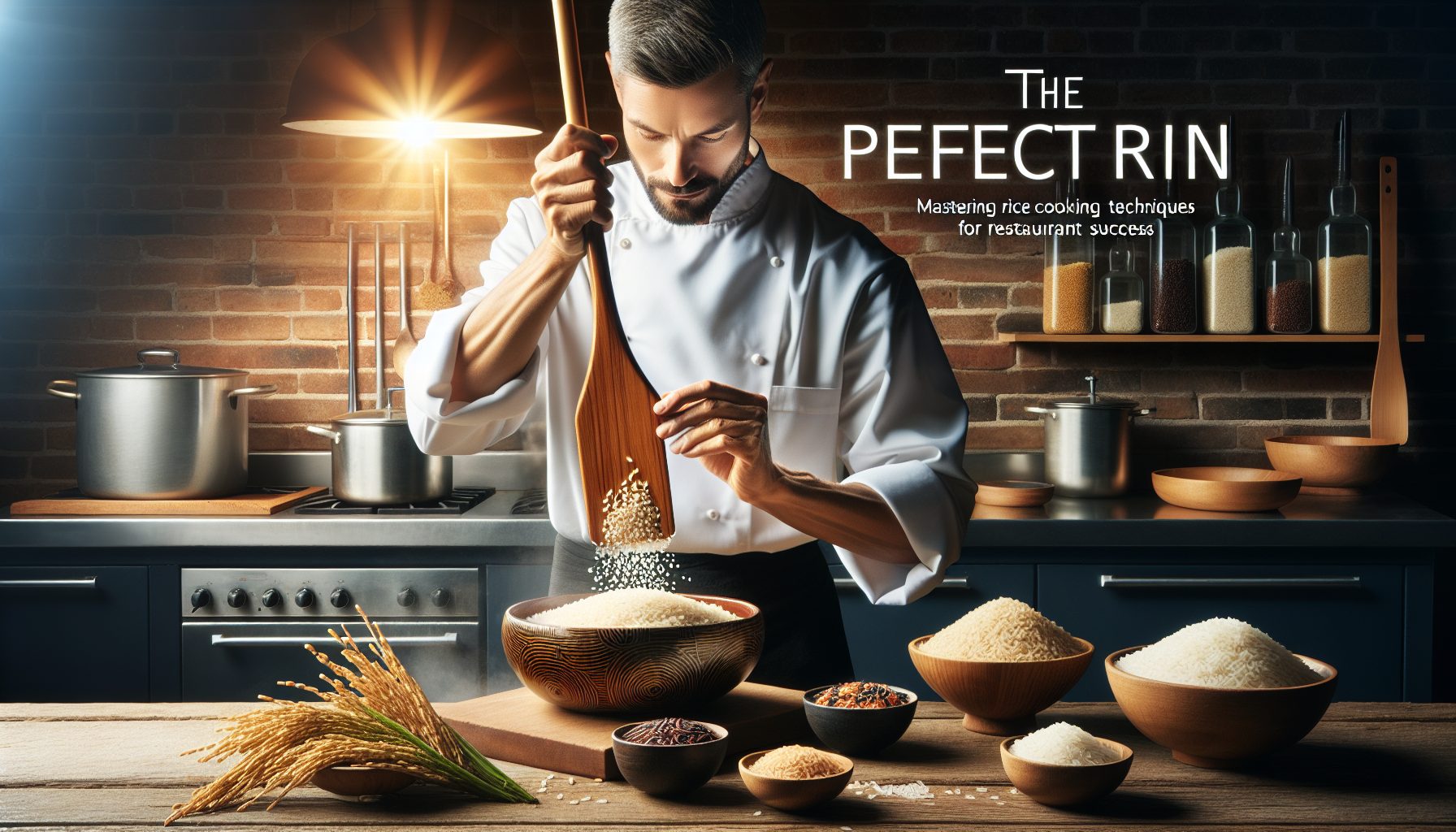Food
The Perfect Grain: Mastering Rice Cooking Techniques for Restaurant Success

If you’ve ever tasted rice in a high-end restaurant and wondered why yours never quite hits the mark, you’re not alone. The secret often lies in mastering the art of cooking rice. Whether you’re running a bustling eatery or just want to impress your family at home, this guide will take you through the essential techniques to achieve the perfect grain every time. So, let’s dive into the world of rice cooking!
The Foundation: Choosing the Right Rice
Before you can master cooking techniques, it’s crucial to select the right type of rice. Did you know there are more than 40,000 varieties of rice? While that sounds overwhelming, here are the main types you’ll typically encounter:
Common Rice Varieties
- Long Grain: Think Basmati or Jasmine. These varieties tend to stay separate and fluffy, making them perfect for pilafs or as a side.
- Medium Grain: Often used in risottos, medium-grain varieties like Arborio are starchier, creating a creamy texture.
- Short Grain: Sushi rice falls into this category. It’s sticky and compact, ideal for rolling and molding.
A Quick Guide to Choosing
- For Stir-Fries: Long grain is your best friend.
- For Curries: Basmatí works wonders as it absorbs flavors beautifully.
- For Sushi: Short grain is unbeatable.
The Art of Washing Your Rice
One of the biggest mistakes home cooks make involves skipping the washing step. Rinsing your rice has several benefits:
- Removes Excess Starch: This is essential for long-grain rice, as it prevents clumping.
- Enhances Flavor: Rinsing can wash away any earthy flavors from storage.
- Improved Texture: Clean rice cooks up with a better bite.
How to Wash Like a Pro
- Place your rice in a bowl and cover it with cold water.
- Swirl around gently for about 30 seconds.
- Drain the water; repeat this process 2-3 times until the water runs clear.
The Perfect Ratio: Water to Rice
Ah, the classic conundrum! What’s the right water-to-rice ratio?
- Long Grain: 1 cup of rice to 2 cups of water.
- Medium Grain: 1 cup of rice to 1.5 cups of water.
- Short Grain: 1 cup of rice to 1.25 cups of water.
Pro Tip: Use a Liquid Measure
Instead of guessing, invest in a good liquid measuring cup. Accuracy matters in the kitchen, especially when it comes to rice!
Cooking Techniques: Boiling vs. Steaming
While boiling is the most common cooking method, steaming can elevate your rice game to restaurant-quality. Let’s break down both techniques.
Boiling Method
- In a pot, bring your water to a rolling boil.
- Add the washed rice and a pinch of salt.
- Lower the heat to a simmer and cover.
- Cook for the recommended time (check the variety).
- Once done, let it sit covered for about 10 minutes before fluffing with a fork.
Steaming Method
- Place the rinsed rice in a steamer basket and season lightly.
- Depending on the variety, steam for about 20-30 minutes.
- Perfectly fluffy rice with no excess water!
Flavoring Rice: Adding a Gourmet Touch
Now that you’ve got the fundamentals down, let’s talk about flavoring. Elevating your rice with some simple additions can make a world of difference.
Stock and Broth
- Swap plain water with chicken, vegetable, or seafood stock for a robust flavor.
- Consider using coconut milk for Thai dishes; it adds richness and depth.
Aromatics
- Garlic, onion, and herbs can work wonders. Sauté some garlic in olive oil before adding your rice and water for an aromatic lift.
Add-Ins for Excitement
Don’t stop at just flavoring the water! Here are some fun add-ins:
- Vegetables: Peas, carrots, or peppers cooked right into the rice.
- Nuts or Seeds: Adding almonds or sesame seeds introduces a lovely crunch.
- Herbs: Fresh cilantro or parsley sprinkled on before serving adds color and flavor.
Storing Leftover Rice
Often, cooking rice in batches can save you time, especially in a restaurant setting. But how do you store leftover rice safely?
Refrigerating
- Cool rice quickly to avoid bacteria growth, then store in an airtight container.
- Good for about 3-4 days in the fridge.
Freezing
- You can also freeze cooked rice. Portion it in freezer bags for easy thawing and reheating.
Common Mistakes to Avoid
Even seasoned chefs can fall into these traps:
- Not Letting it Rest: Let your rice sit after cooking to finish the steaming process.
- Peeking Too Much: Every time you lift the lid, steam escapes. Keep it closed during cooking!
Conclusion: Your Rice Mastery Awaits!
Perfect rice can absolutely elevate your culinary offerings, whether for your restaurant menu or family dinners. By mastering the right techniques, understanding the different rice types, and experimenting with flavors, you’re well on your way to rice mastery.
For more kitchen hacks and culinary treasures, don’t forget to check out our articles on Culinary Techniques and Restaurant Management.
Further Reading
Curious about the nutritional benefits of rice and related studies? Check out the USDA’s Agricultural Research for more insight.
Now, gather your ingredients and start practicing! Your restaurant-quality rice journey begins today.
-

 News18 hours ago
News18 hours agoTeenage US Citizen Records Brutal Arrest by Immigration Agents Who Told Him, ‘You Have No Rights’
-
News17 hours ago
Maltese Police Officers Participate in Operation in the Black Sea
-

 Business18 hours ago
Business18 hours agoNavigating the Economic Landscape: Key Insights from Today’s Business Headlines
-

 Entertainment18 hours ago
Entertainment18 hours agoCinematic Success: Fun Facts About Movies That Shaped the Film Industry
-

 News16 hours ago
News16 hours ago“Honoring Ukraine: A Tribute” (July 26, 2025) — dynamo.kiev.ua
-

 Business15 hours ago
Business15 hours agoThe Top 10 Business Opportunities to Watch in 2025
-

 Business17 hours ago
Business17 hours agoNavigating the Shifting Sands: Key Global Economic Trends for 2024
-

 News15 hours ago
News15 hours agoEnviMin Showcases Vacaresti Natural Park to Her German Counterpart
